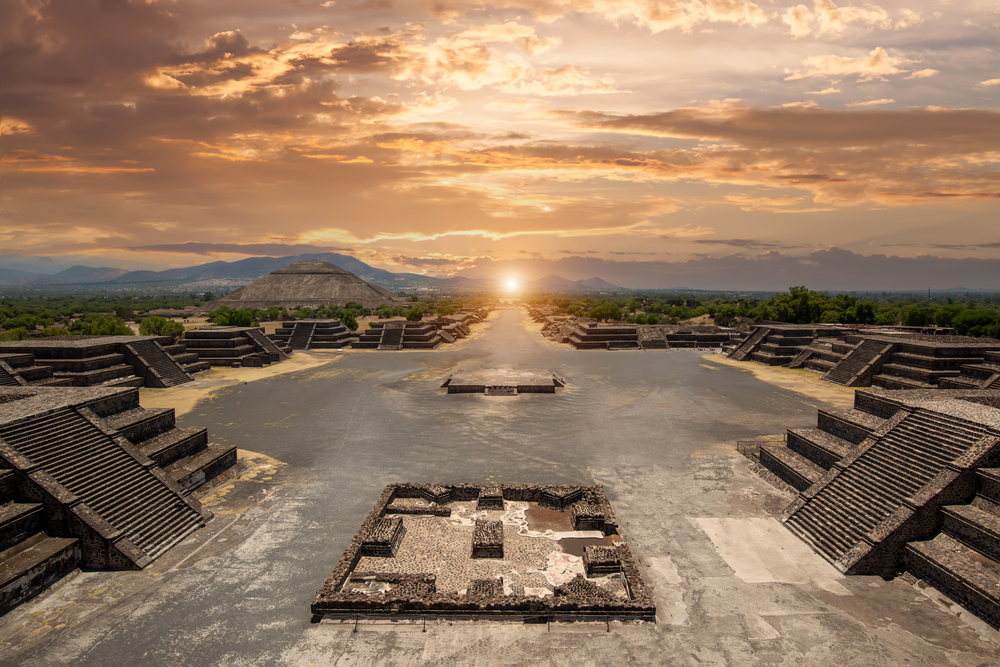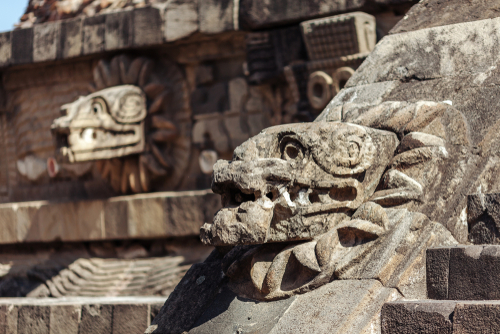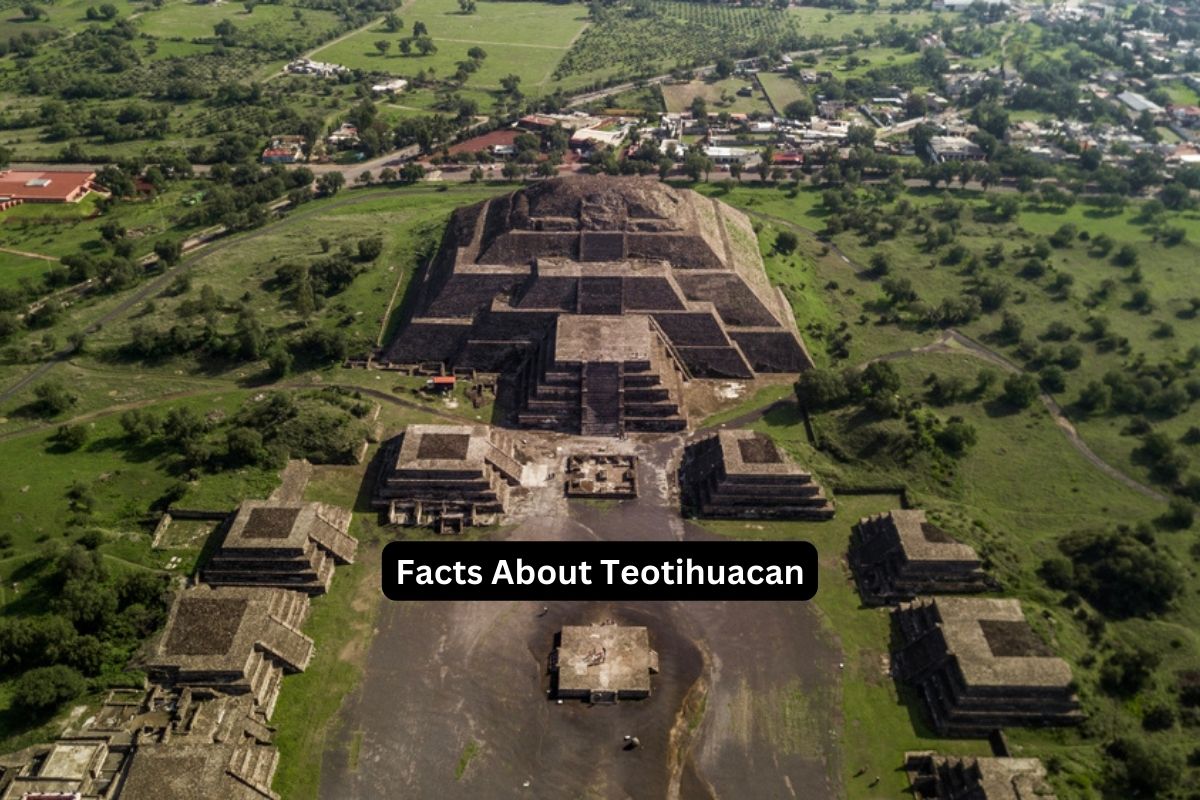Teotihuacan, an ancient city located in present-day Mexico, stands as one of the most remarkable and mysterious civilizations in Mesoamerica.
Flourishing between 150 CE and 450 CE, Teotihuacan reached its peak as a grand urban center with awe-inspiring pyramids, the Pyramid of the Sun and the Pyramid of the Moon, and the impressive Avenue of the Dead.
Its cultural influence extended to the Maya and Aztec civilizations, and its cosmopolitan nature showcased a diverse population. Despite its prominence, the true identity of its builders and the reasons for its decline remain elusive, adding an air of intrigue to this remarkable ancient city.
Teotihuacan Facts
1. Ancient city in Mexico
Teotihuacan is an ancient city of great historical significance located in present-day Mexico. The name “Teotihuacan” is of Nahuatl origin and translates to “the place where the gods were created” or “the place of the gods.”
Also Read: Chichen Itza Facts
It was an awe-inspiring urban center that served as the focal point of a powerful civilization.

2. Flourished between 150 CE and 450 CE
Teotihuacan reached its peak during what is known as the Classic period of Mesoamerican civilization.
The city’s rise to prominence occurred around 150 CE, and it experienced rapid growth and prosperity for several centuries until approximately 450 CE. During this time, it was a vibrant hub of cultural exchange, trade, and religion.
3. Located near modern-day Mexico City
Teotihuacan is situated in the Valley of Mexico, about 30 miles (50 kilometers) northeast of present-day Mexico City. The city’s strategic location made it a critical center for regional trade and commerce.
Also Read: Facts About the Mayan Pyramids
It was well-connected to other important Mesoamerican cities through an extensive network of trade routes. The fertile land in the valley also supported agriculture, contributing to the city’s economic success.
Today, the ruins of Teotihuacan are a UNESCO World Heritage Site and a popular tourist destination, drawing visitors from all over the world to explore its ancient wonders.
4. Home to the Pyramid of the Sun (3rd largest pyramid in the world)
One of the most iconic structures in Teotihuacan is the Pyramid of the Sun. This massive pyramid stands at an impressive height of about 65 meters (213 feet) and covers an area of over 100,000 square meters (1.1 million square feet).
The Pyramid of the Sun was constructed as a religious and ceremonial center, likely dedicated to the worship of deities associated with the sun and agricultural fertility.
Climbing to the top of this pyramid offers visitors breathtaking views of the surrounding ancient city and the surrounding valley.
5. Contains the Pyramid of the Moon
Another significant structure in Teotihuacan is the Pyramid of the Moon, located at the northern end of the Avenue of the Dead. It is slightly smaller than the Pyramid of the Sun but still an impressive construction.
The Pyramid of the Moon was also a prominent religious site, possibly dedicated to goddesses related to fertility, water, and the moon. Its strategic position at the northern end of the Avenue of the Dead gives it a commanding presence over the entire city.
Like the Pyramid of the Sun, the Pyramid of the Moon played a crucial role in the city’s religious and ceremonial life.

6. Avenue of the Dead – main ceremonial route
The Avenue of the Dead is the main thoroughfare of Teotihuacan, running approximately 2.5 kilometers (1.5 miles) through the city from north to south.
The name “Avenue of the Dead” was given by the Aztecs, who believed that the structures along the avenue were tombs, but in reality, they were ceremonial and religious structures. Along this avenue, major architectural monuments, including the Pyramid of the Moon, the Pyramid of the Sun, and the Ciudadela (Citadel), are located.
The avenue served as the central axis for processions, religious rituals, and civic events, making it a vital artery of Teotihuacan’s social and spiritual life. Additionally, there were residential and commercial structures lining the avenue, showcasing the city’s diverse population and economic activities.
The presence of these impressive structures and the well-organized urban layout of Teotihuacan reflect the advanced engineering and architectural capabilities of its ancient inhabitants.
The precise and grandiose constructions in the city bear witness to the importance of religion, politics, and cultural expression in Teotihuacan’s society. Today, the archaeological site of Teotihuacan remains a fascinating glimpse into the achievements and mysteries of this ancient Mesoamerican civilization.
7. Influenced Maya and Aztec civilizations
Teotihuacan’s cultural and political influence extended far beyond its own boundaries. The city’s rise to prominence coincided with the decline of other Mesoamerican cultures, such as the Olmecs.
As Teotihuacan flourished, its influence spread throughout the region, particularly to the Maya civilization in the southeastern lowlands of present-day Mexico, Belize, Guatemala, Honduras, and El Salvador.
The Maya adopted aspects of Teotihuacan’s art, architecture, and religious practices, which can be seen in certain structures and artworks at various Maya sites.
The influence of Teotihuacan was also evident in the later Aztec civilization. When the Aztecs arrived in the Valley of Mexico in the 12th century CE, they encountered the ruins of Teotihuacan and were deeply impressed by its ancient grandeur.
The Aztecs considered Teotihuacan a sacred place and believed it to be the birthplace of the gods. This reverence is reflected in the Aztec naming of the pyramids and the Avenue of the Dead.
8. Ethnic diversity among its inhabitants
Teotihuacan was a melting pot of different ethnicities and cultures. Archaeological evidence indicates the presence of people from various regions and backgrounds, including the Maya, Zapotec, Mixtec, Otomi, and others.
The city’s cosmopolitan nature likely contributed to its dynamic cultural environment and may have played a role in its ability to exert influence over neighboring regions.
9. Mysterious builders and original name unknown
Despite decades of archaeological research, the true identity of the people who built and inhabited Teotihuacan remains an enigma. The original name of the city is unknown as well, as the name “Teotihuacan” was given by the Aztecs centuries after the city’s decline.
The mystery surrounding its creators has sparked numerous theories and debates among scholars. Some propose that the city was built by a group of elites who established a dominant centralized authority, while others believe it was the result of collaboration between different ethnic groups.
10. Declined and abandoned around 650 CE
The decline of Teotihuacan began around the 6th century CE, and by 650 CE, the city was largely abandoned. The reasons for its decline and eventual collapse are still a subject of scholarly inquiry and speculation.
Some suggested factors include environmental changes, such as volcanic eruptions or a prolonged drought, which might have affected agriculture and the availability of resources.
Others point to internal social and political unrest, possibly leading to conflict and eventual disintegration. Whatever the reasons, the city’s decline led to its abandonment, and Teotihuacan’s once-thriving population dispersed, leaving behind a monumental ghost city.
